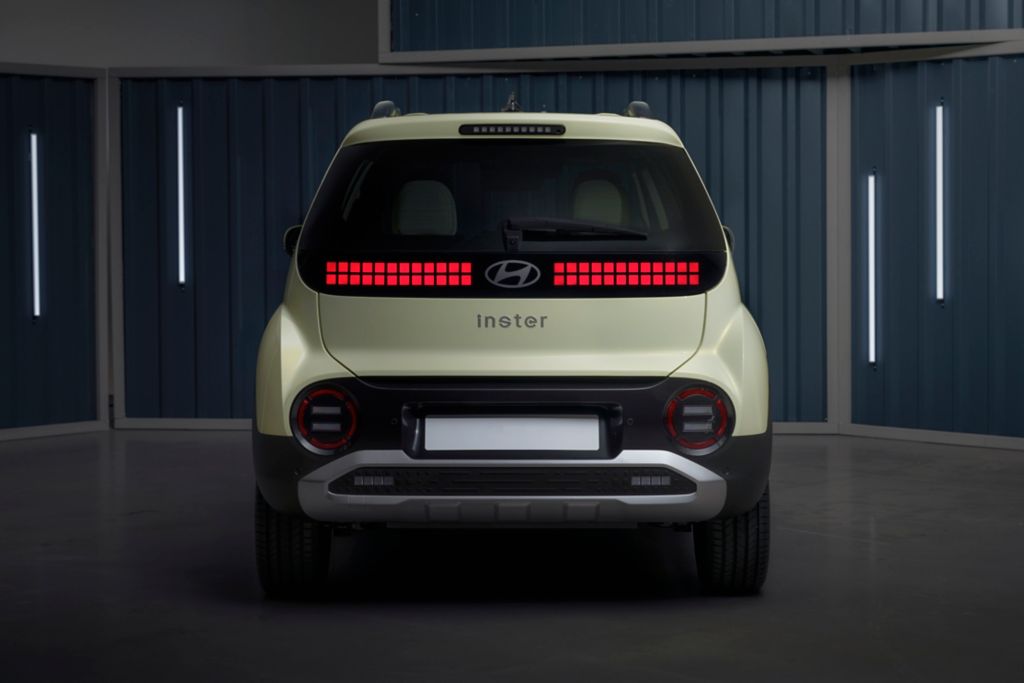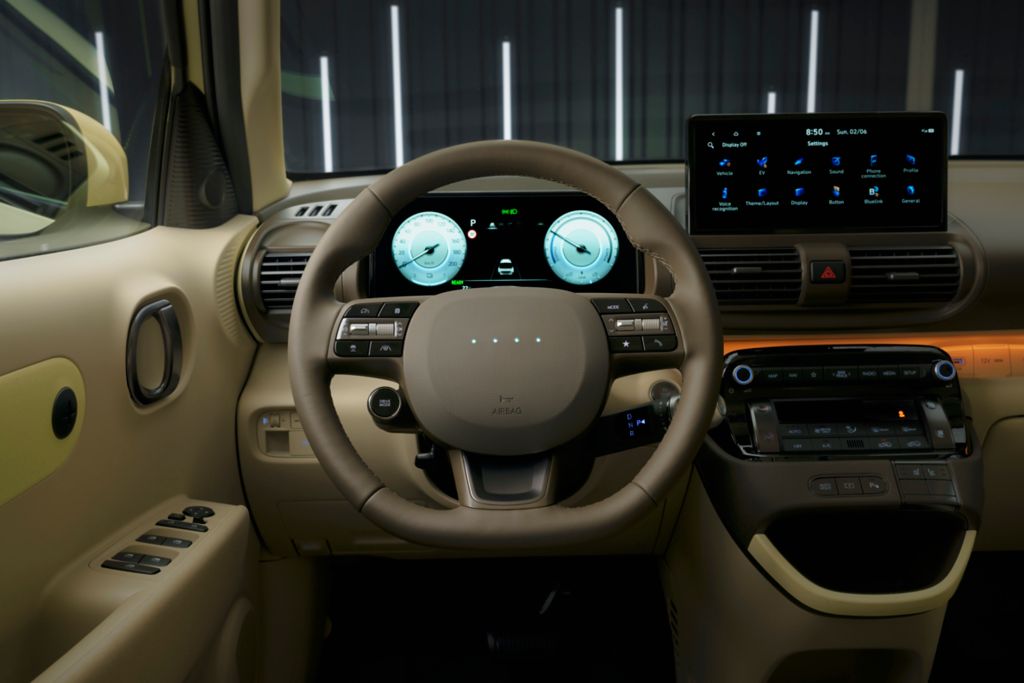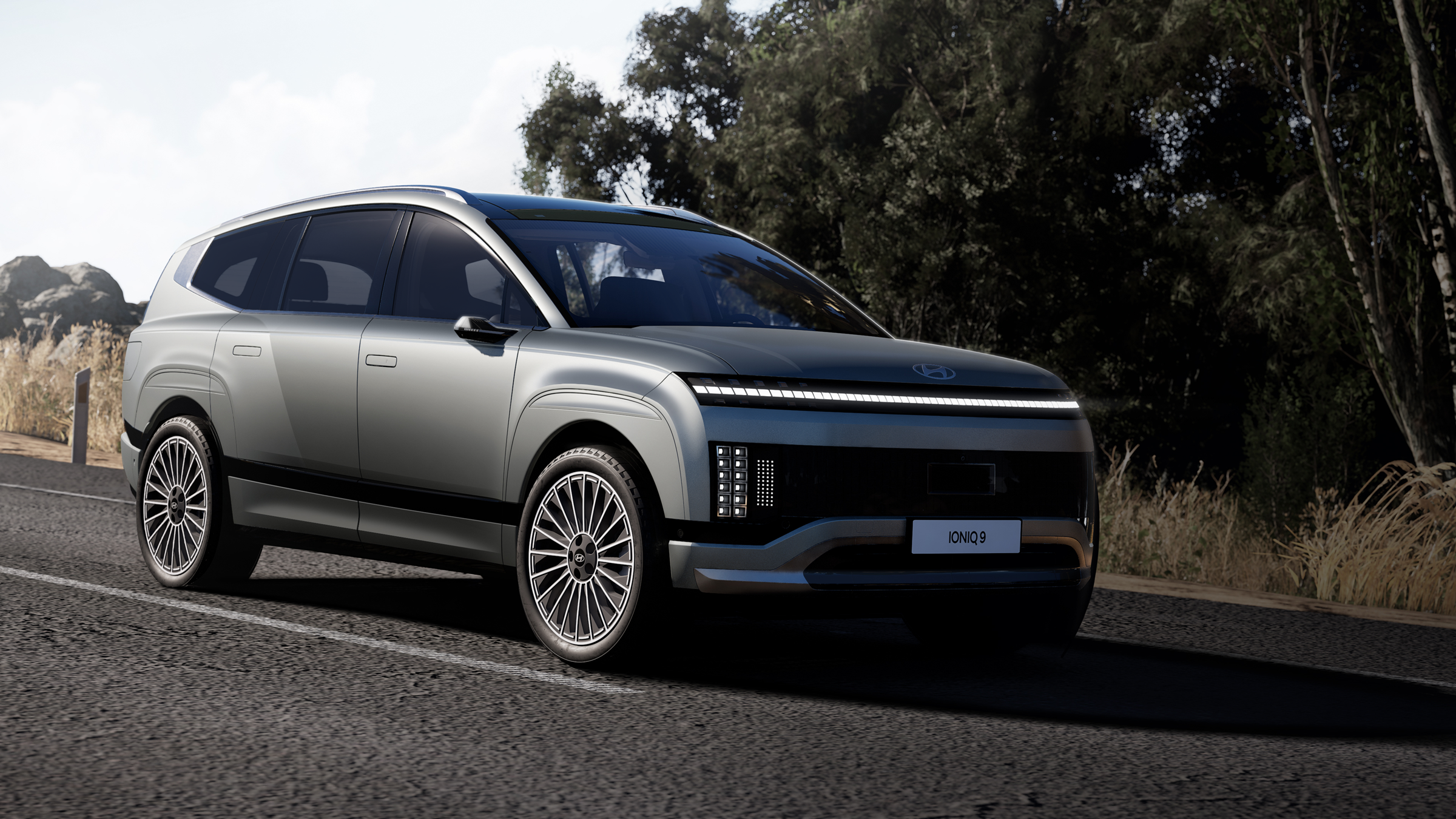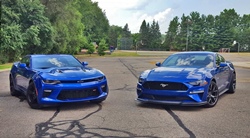Hyundai is making it clear that it intends to grab a large slice of the EV market with its growing lineup of EV models including the Ioniq 5 and Ioniq 6 as well as the recently launched Ioniq 9. While this trio of EVs is shaping up to be a potent force for Hyundai, one missing piece of the puzzle is the small Inster. Known as the Casper in some markets, the tiny EV is supposed to be a budget entry for buyers and is also currently a tempting slice of forbidden fruit for U.S. buyers.
But could the Inster work in the U.S. and is there a business case to bring the compact EV over as market conditions change and more buyers want an affordable gateway model into the EV lifestyle?
Inster pumps up the cute factor

At first glance, it’s hard to ignore the cute styling that defines the Inster. The front end gets pixel-styled daytime running lights with the large headlights themselves being mounted in the front bumper with the units featuring circular LED accent lighting. The styling works well with its short dimensions with the 150.6-inch length being shorter than a Mitsubishi Mirage. The side profile leads the eye to the simple rear end with the space getting pixeled taillights and a simple liftgate. Sharp creases define the rear fenders and while it may look bland from some angles, the rear does do a good job balancing out the front end’s cute look.
Buyers looking for a pinch of trail-ready styling can go for the recently unveiled Electric Cross variant which gets styling and minor upgrades to help it be a better fit out on the trail though don’t mistake it for a Suzuki Jimny in that regard. Regardless of flavor, the Inster is attempting to appeal to young urban dwellers with the compact size being a good fit for tight urban parking lots and tight city alleys.

Meanwhile, the interior gets a pair of screens for the infotainment system and the instrument cluster but with the Inster being expected to be an economical option for most buyers, the plastic quality here is a step lower than other Hyundai models with the Inster also getting more analog buttons and switches for core functions. Electric Cross models get a two-tone interior but it still retains the core look and theme of the standard model.
Inster EV performance is all about range
Hyundai says the Inster is all about range and that’s quite evident when you look at its EV powertrain with all models being powered by a single front-mounted electric motor. The amount of power on hand depends on configuration with the base version getting 95 hp while the Long-Range variants make 113 hp thanks in part to a beefier 49.0 kWh battery pack which replaces the default 42.0 kWh battery pack. As a result, range becomes the star of the show with Hyundai saying the Inster can get 221 miles of range in Long Range guise when measured on the WTLP scale. We have not had a chance to formally drive an Inster just yet but we hope that will change in the future so we can get a better picture of what it’s all about especially in handling.
Buyers that have access to a DC fast charger will see range go from 10 to 80% in as little as 30 minutes but in the event they don’t have access to one of these stations, the Inster also comes standard with an 11.0 kWh onboard charging system as well as an optional heat pump. A whole suite of standard driver assistance features are also standard too.
Will it come to the U.S.?

Like other new Hyundai models, the Inster will launch in South Korea first before going to other markets. Putting the model in the U.S. market would in theory give the company a new gateway model for its Ioniq EV family with the marketing department potentially swapping the Inster name out for a lower-numbered Ioniq name to help it resonate with buyers here in our country.
That said, the Inster in its current form will most likely not come to the United States. This is mainly due to the extensive revisions that Hyundai would need to do to the EV to make it comply with U.S. safety laws which would undoubtedly make the Inster bigger and also cost Hyundai more money to engineer a separate platform for the EV to help it make the trip across the Pacific. However, the Inster does provide a glimpse into how Hyundai could reach out to more budget-minded EV buyers in the future with the model’s sales in other markets giving Hyundai valuable real-world data which in turn could help provide core pillars for the company to use if it chooses to make a compact EV for the U.S.
As for its current plans, Hyundai is focusing on the bigger members of the lineup with the company launching the Ioniq 9 and the revamped 2026 Palisade in South Korea. These two models will help beef up the company’s presence in the family hauler segment before they make their way to the U.S. with the Ioniq 9 being an electrified flagship for family buyers.

Carl Malek has been an automotive journalist for over 10 years. First starting out as a freelance photographer before making the transition to writing during college, his work has appeared on numerous automotive forums as well as websites such as Autoshopper.com.
Carl is also a big fan of British vehicles with the bulk of his devotion going to the Morgan Motor Company as well as offerings from Lotus, MG, and Caterham. When he is not writing about automobiles, Carl enjoys spending time with his family and friends in the Metro Detroit area, as well as spending time with his adorable pets.

